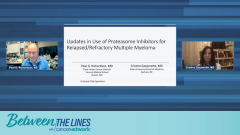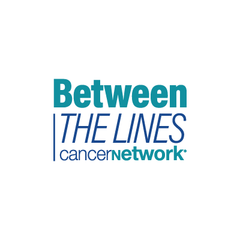
In-Class Transition From Bortezomib to Ixazomib in MM: ASH 2021 Update
Insight on the ASH 2021 update highlighting response rates and discontinuation in patients who received in-class transition from bortezomib to ixazomib for multiple myeloma.
Episodes in this series

Transcript:
Paul G. Richardson, MD: In terms of updates at ASH [American Society of Hematology Annual Meeting], there are a number of important updates from this original paper that were presented. I wonder, what were your impressions?
Cristina Gasparetto, MD: Initially, when the paper was published, the follow-up was relatively short, so it’s interesting to see the data with a longer follow-up and to see that the median duration of therapy with the triple combination was longer. Patients were able to sustain therapy for 13.4 months from the beginning, and the overall complete remission number is also improving. That was the point at the beginning. It was a very short follow-up of only 8 months, I believe. This was a longer follow-up. We’re seeing the sustainability of this treatment, and some patients were able to reach a deeper response. Sometimes patients with myeloma have this slow-growing clone. It takes a longer time to eradicate a clone, so the sustainability of therapy is becoming very important because we have this slow-growing clone that we’re trying to eliminate with continuing therapy. The triple regimens attack the myeloma at a different level. Patients were able to sustain therapy, and more patients were able to achieve a deeper response, which is very important. If we believe that complete remission is a good surrogate, that will translate to a better outcome, which in a new diagnosis is very important. With a longer follow-up on this study, reaching a deeper response and sustaining therapy were very important.
Paul G. Richardson, MD: I agree. I echo all of what you’ve said. What strikes me from this data set is the consistency of the information. The overall response rate gets to the 80% territory, which we expect. But when you look under the umbrella of responses, it’s a very encouraging trend. I like your point that the complete response [CR] rate improves consistently, and allowing a patient to continue on therapy that they’re tolerating is borne out by the information. After 3 cycles with mature follow-up, they get a 9% CR rate, but that triples by an 18.5-month milestone sometime later. I like your point that a high-quality response translates into clinical benefit.
In this context, this is a quick review of some of the toxicities and reasons for discontinuation.
Cristina Gasparetto, MD: Discontinuation, yes.
Paul G. Richardson, MD: There are no surprises. This is a point that we touched on before, that the tolerability profile of this is favorable, but most important, there are no unexpected issues that emerge in the context of premature discontinuation.
Transcript edited for clarity.
Newsletter
Stay up to date on recent advances in the multidisciplinary approach to cancer.




















































































